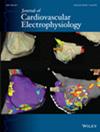Left Atrial Slow-Conduction Channels Predict Pulmonary Vein Isolation Outcomes in Paroxysmal Atrial Fibrillation
Abstract
Introduction
The mechanisms underlying recurrent atrial fibrillation (AF) despite durable pulmonary vein isolation (PVI) in patients with paroxysmal AF (PAF) remain unclear. This study investigates whether left atrial (LA) slow-conduction channels act as a substrate for recurrence following durable PVI.
Methods
High-density LA mapping was performed in 120 PAF patients. LA conduction velocities were calculated using the Local Velocity Vector algorithm. Channels were defined as narrow regions with slow conduction (< 0.5 m/s) and fragmented electrograms. All patients underwent PVI using radiofrequency energy. One-year freedom from recurrent AF was compared based on baseline LA channel presence. A control group of five patients with atrioventricular reentrant tachycardia was included.
Results
Among 120 patients, 42 (35%) had 54 LA channels identified. Channels represented ~1% of total LA surface area, exhibited slow conduction (~0.23 m/s), were bordered by lines of block, displayed abnormal electrograms, and demonstrated decremental conduction, suggesting a potential role in reentry. Half were in low-voltage areas while the remainder were in regions with preserved voltage. At 1 year, 3 of 78 patients without channels (4%) had PAF recurrence, all due to PV reconnections, compared to 7 of 42 patients with channels (17%) who experienced recurrence (p = 0.02), 6 of whom had durably isolated PVs on repeat study. No channels were identified in controls.
Conclusion
The absence of LA channels may indicate a PAF phenotype with high PVI success. Conversely, patients with channels are less likely to respond to PVI. It remains unclear whether channels serve as risk indicators or targets for ablation.

 求助内容:
求助内容: 应助结果提醒方式:
应助结果提醒方式:


